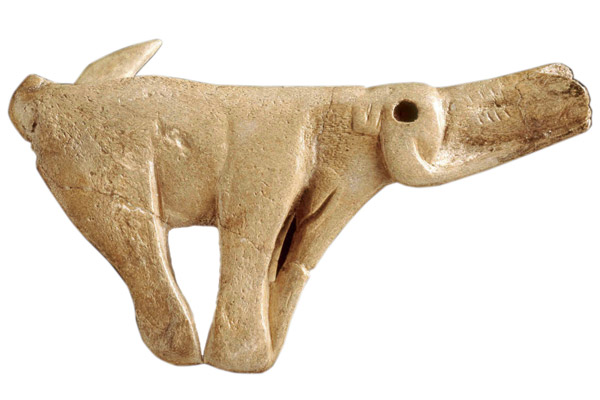The best way to approach any exhibition is with a clear and uncluttered mind, without expectations or prejudices. Of course this is often impossible, for all sorts of reasons, particularly when we have some familiarity with the subject on view. Inevitably we are besieged by images and opinions before we enter an exhibition of Manet or Picasso, but with Ice Age Art I was able to approach without any troubling preconceptions. I arrived at the British Museum in a state of pleasant anticipation, and within minutes I was entirely won over. The curator, Jill Cook, has given us an extraordinary glimpse of a long-distant age which yet feels incredibly fresh and relevant to us today.
The exhibition’s subtitle is ‘arrival of the modern mind’ and its thesis — that Ice Age art gave us the first figurative art in the world and thus encompassed the dawning of how we think now — is entirely convincing. Yet the sheer ancientness of this work can be daunting. The last European Ice Age occurred between 40,000 and 10,000 years ago, and these numbers are literally mind-numbing. The first object in the exhibition is a small figure carved from mammoth ivory found at Lespugue in France. She has big breasts and hips and heavy thighs, a figure created for or by child-bearing. Obviously a celebration of fertility, but also something else: with her bowed head and delicate shoulders, she suggests a Madonna-like modesty and perhaps even a spiritual identity. She is 23,000 years old, and yet she so excited Picasso with her echoes of Cubist fracturing and stylisation that he owned two replicas of her.
So it should be noted early on that this is an exhibition of art rather than dry-as-dust antiquities (if such things actually exist outside people’s prejudices).







Comments
Join the debate for just £1 a month
Be part of the conversation with other Spectator readers by getting your first three months for £3.
UNLOCK ACCESS Just £1 a monthAlready a subscriber? Log in